Building on my previous post about how Kanban is a relevant tool to manage projects in a household, I would like to highlight a bit more details the benefits of using this very powerful tool in a personal context.
It is a given that Kanban is an effective tool to do stuff, develop software, deliver projects, manufacture products etc. But when it comes to personal lives, kanban has amazing attributes, which make it a very suitabl tool. Here are 10 good reasons for anybody to start to use Kanban at home to manage all sort of activities.
- It makes work dynamic, not a burden – On a Kanban, tasks are moving forward, even when they are not completely done. You can always reflect any progress made, even just an incremental step, which means that the board looks different every night. Even when you don’t do anything, your environment may change, which can add new tasks, and that also makes your Kanban evolve. It is a dynamic tool, and you can embrace this dynamic by pulling actions towards completion. On a Kanban, the stuff to do doesn’t sit there, heavy and overwhelming, waiting to be completed. On the contrary, tasks are light and full of energy as if they were just calling you to be moved a step forward. On a Kanban, the work flows like clear water, in sync with the flow of your always evolving life. And this goes much beyond product manufacturing or software development.
- It empowers you – Kanbans are visual, therefore it is a bit like a map of what is going on at the moment in your life.
When you stand in front of your Kanban, determining your next priorities, you’re a bit like a general in front of a major battlefield’s map, making the key decisions to achieve a victory.
This is incredibly empowering, and gives you the feeling of being in control of your life. It would be a shame not to leverage of this amazing sensation to manage the most important bits in your life.
- It is your baby – Your Kanban is entirely personal and customisable. It is 100% made by you, it looks like you, or more importantly you have total freedom to make it look like you, visually but also like the way you think or process information. It’s your baby, and you can tailor it in a thousand more ways than you can tailor to-do lists, diaries, or self-organisation apps.
- It is inclusive – it is much easier to gather people and grab their attention in front of a board that is structured, simple and colourful, than in front of a spreadsheet that can only be owned and understood by the one who built it. The visual and simple nature of the Kanban makes it attractive and friendly, and straightforward for anybody to get on board with it. This attribute is highly valuable for a team in the work place using Kanban, but also for a couple or a family at home to manage their own stuff, as it doesn’t require any fancy skills to build and manage one. And it is big enough for everybody to input in it, even at the same time.
- It is simple – Most project management software is usually complex, and it takes a while to master them and use them effectively. Even then, you don’t usually use more than 40-50% of the features available.
In comparison, Kanban is a simple tool to master as it develops at your own pace. You use 100% of the features constantly as you have built them all yourself based on your needs.
That why even when it becomes iteratively more and more complex, Kanban remains very simple for anybody to embrace. And as a consequence, this simplicity makes it a preferred tool to be considered in a household.
- It is improvable – There are a thousand ways to improve your Kanban in order to make it more effective. Whereas at work you need consensus from the whole team to make any change to it (and you also have to convince your manager that the idea comes from him/her), at home you just need to agree any new change with your partner, potentially your kids and that’s it. And even if you guys don’t reach an agreement, it easy to settle this with a « let’s try for a couple of days and see if it works or not ». If it works, you just keep the change, if not, you just scrap it. Easy. The most important thing is to let your creativity do the job in order to find new ways of working that suit you best.
- It makes life positive – on Kanban, the tasks you are currently working on are always put into a broader context : the context of the other tasks you are working on, the ones you have to do later, and the ones you already executed etc. You can also visualise the bigger picture, ie. your ultimate objective, or an interim one. Putting things into context always reminds you of the purpose of what you are doing (the why), and it is very important when it comes to personal life : we often convince ourselves that we do things (especially the mot annoying ones) because we have to, and we often forget that we do them to enhance our environment and make our home a better place. Kanban enables you to take that distance and always keep the why in mind.
- It respects your freedom – One of the biggest strengths of Kanban, and one that is the most difficult to understand at first : Kanban is a tool that help you prioritise your tasks, but it doesn’t tell you what to do WHEN.
The purpose of Kanban is not to tell you how much has to be done in which timeframe, it is to tell you what you should do next and why.
This means that Kanban does not overwhelm you with stuff to do – it just puts you in the best disposition to pull into your plate the task that is the most relevant for you to do now. And if one day you just want to do nothing and just play on your X-box, you can, your Kanban is not going to send you 10 reminders per minute to do more stuff. It makes you effective, that’s it.
- It is scalable – I’ve never worked with Lean or Kanban properly in the office (I am more used to Scrum Agile), but I know it is used in some of the best software development teams in the world (eg the one developing the Microsoft X-box), where it is applied in very complex programs involving several dozens of people. At home, no doubt that a Kanban can help you manage most if not all of what’s going on in your household. My wife and I manage more than five projects together, and I can comfortable say that this covers all of our life as a couple. And it could easily integrate more ramifications, as it does not challenge the primary idea of limiting your work in progress.
- It is FUN – Managing a spreadsheet ? boring. A to-do list ? boring. An action log ? boring. A plan ? boring. Moving coloured cards around the board is way more enjoyable for all the people involved. It gives the relevant support for passionate discussions around what to do and how to do things. That is true at work, but even more at home, because of the nature of the things to do, which directly relate to what matters most to us in life. Working with Kanban is a bit like playing board game, except that nobody loses at the end.


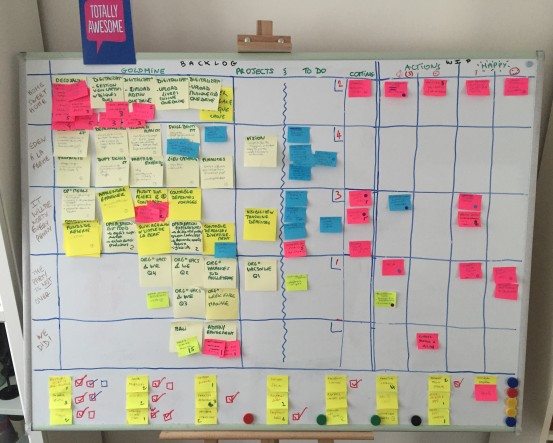
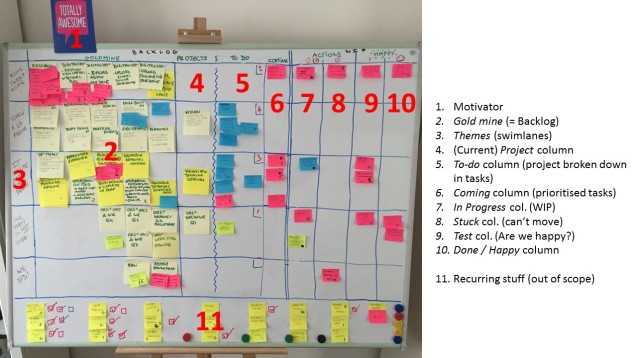


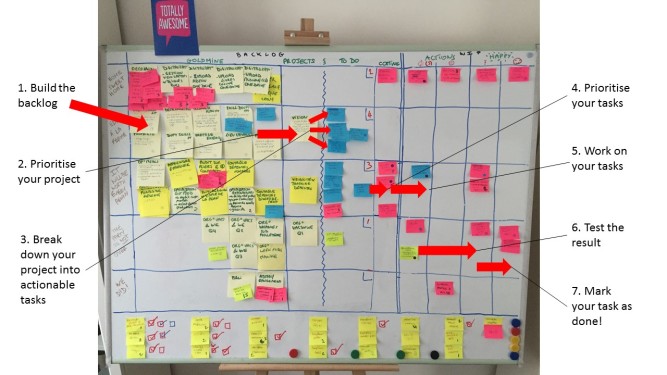
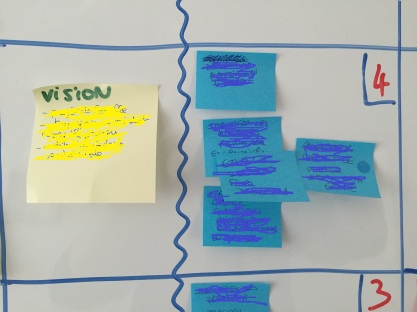







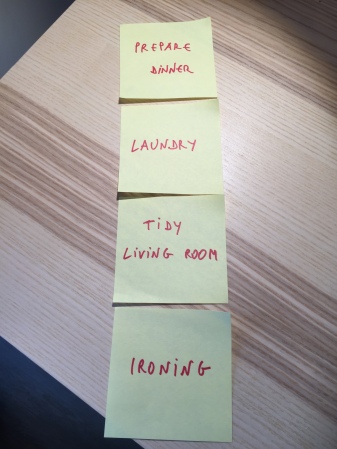


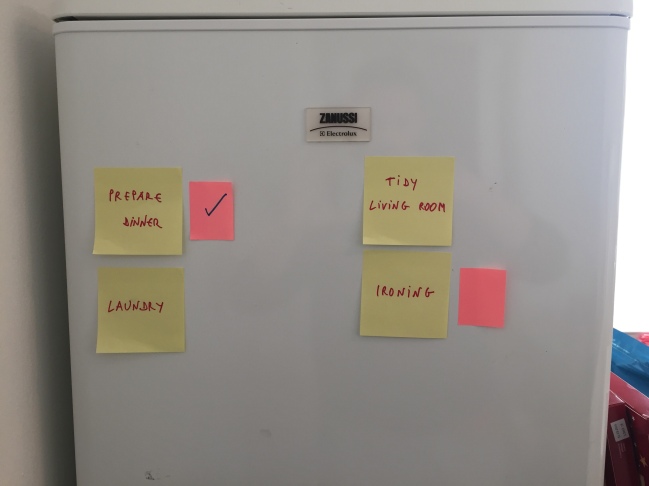
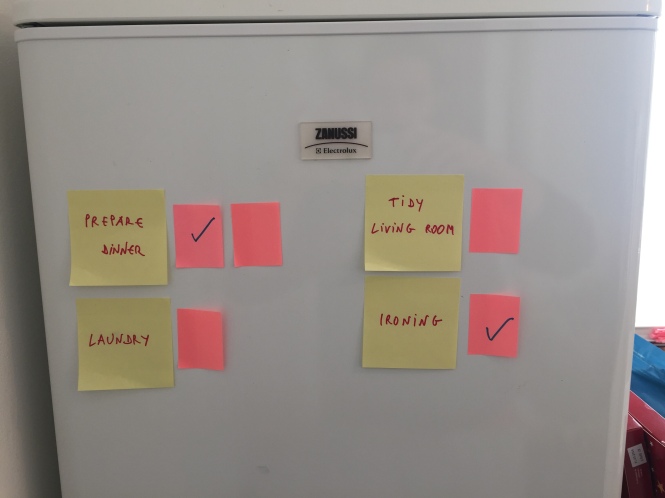
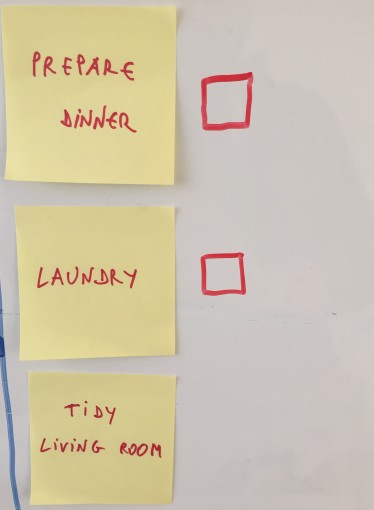
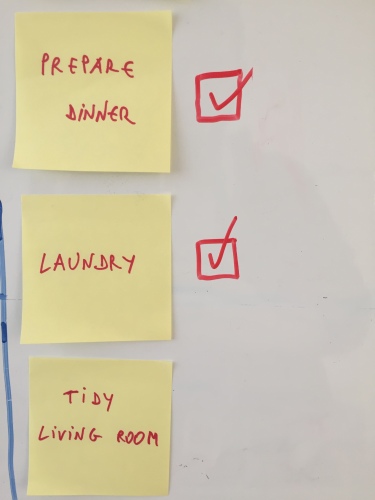
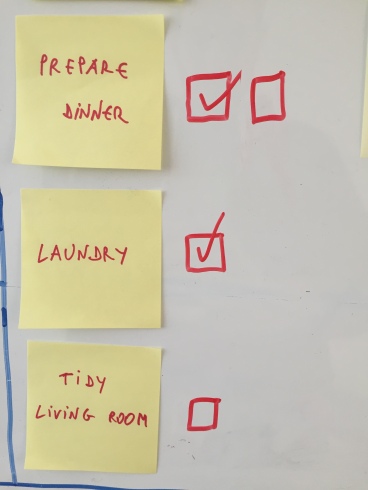
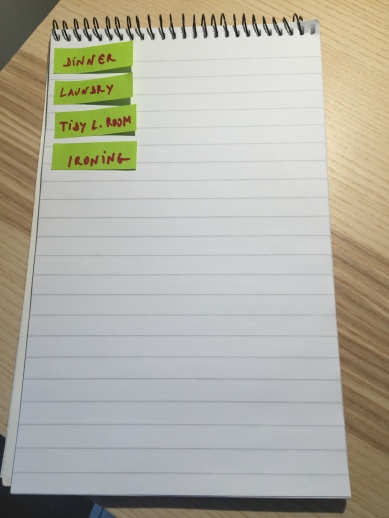
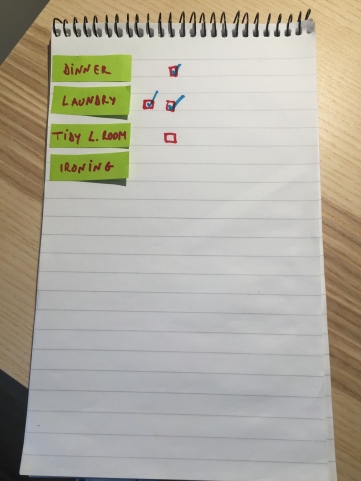
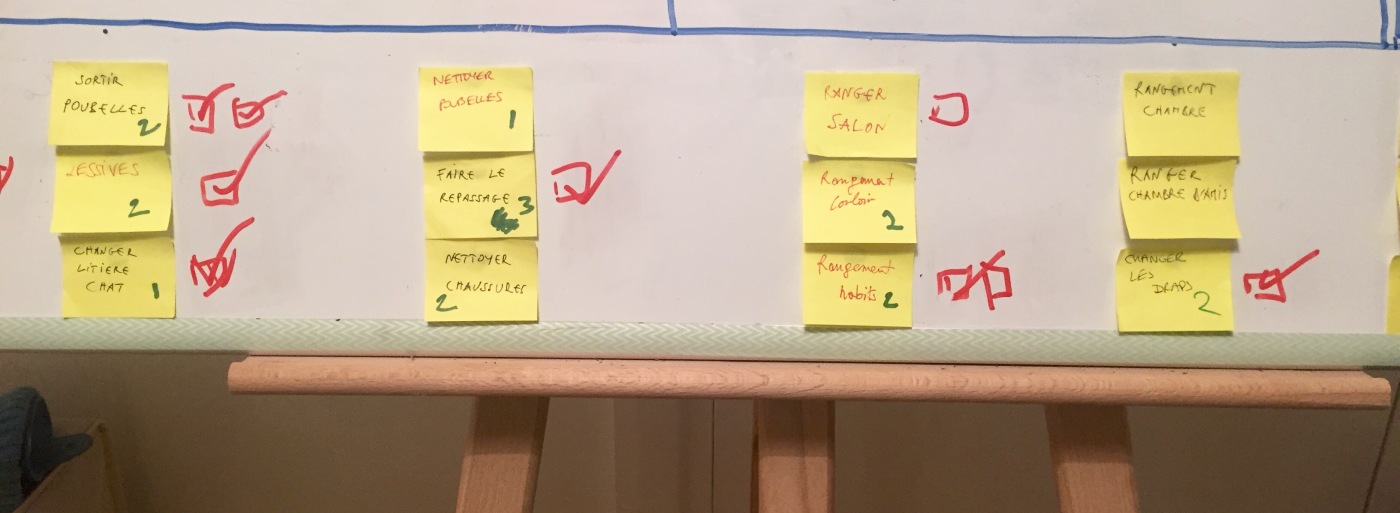
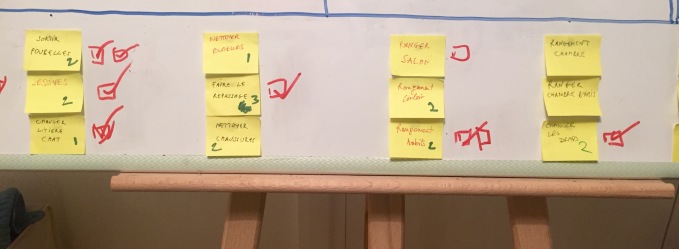


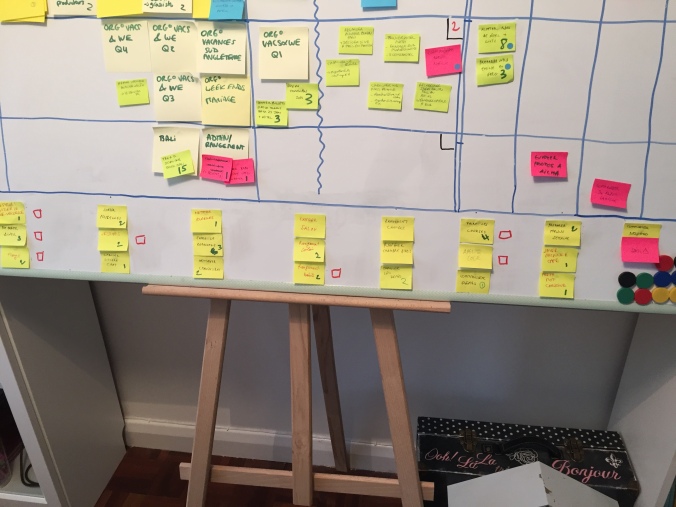
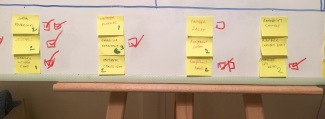
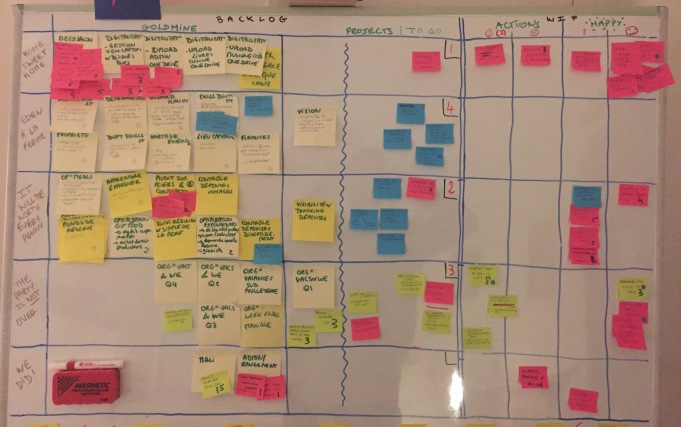
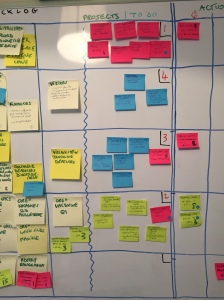
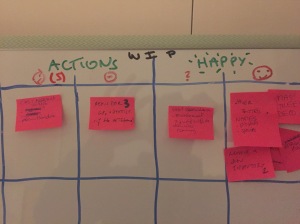 up-to-you. A kanban is a personal thing in the sense that it is suited to the user’s needs and the way his user works. Therefore it fit in our life model, and not the other way around. And that’s why there is absolutely no restrictions in applying it in our personal lives.
up-to-you. A kanban is a personal thing in the sense that it is suited to the user’s needs and the way his user works. Therefore it fit in our life model, and not the other way around. And that’s why there is absolutely no restrictions in applying it in our personal lives.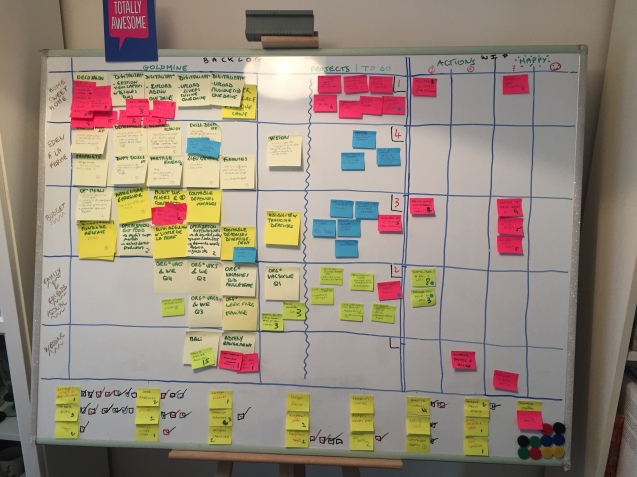
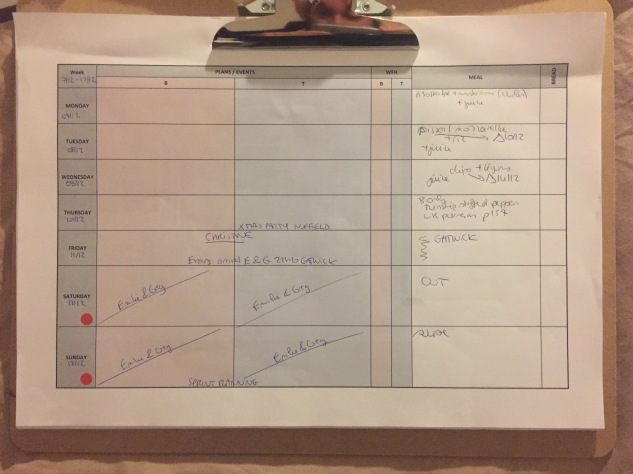
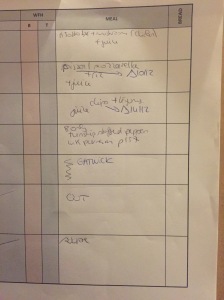
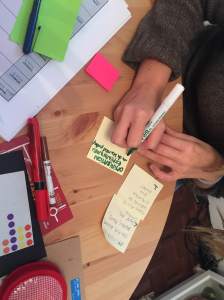

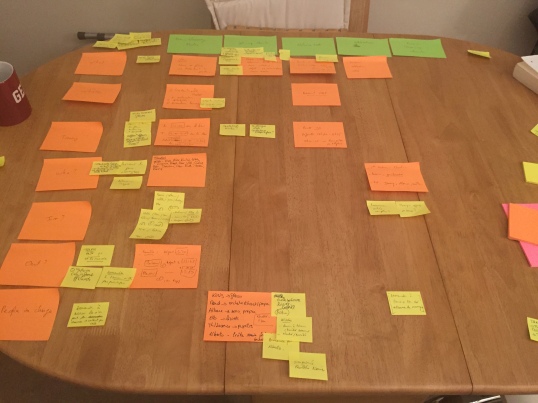

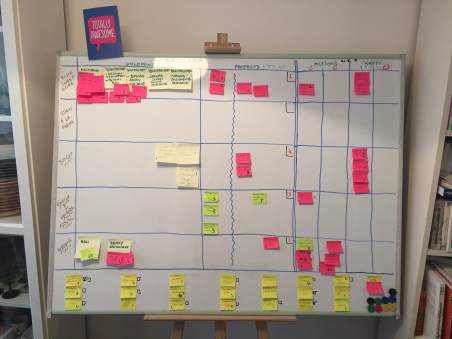


Recent Comments